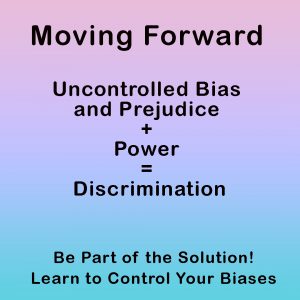 Recent events call for our society to develop a path forward that will allow all residents of this great nation to partake in the promises of the Declaration of Independence.
Recent events call for our society to develop a path forward that will allow all residents of this great nation to partake in the promises of the Declaration of Independence.
We hold these truths to be self-evident, that all men are created equal, that they are endowed by their Creator with certain unalienable Rights, that among these are Life, Liberty and the pursuit of Happiness.
The first step in this process is to take an in-depth look inside ourselves regarding our biases and prejudices. Bias is an inclination or preference–either for or against an individual or group–that interferes with impartial judgment. Prejudice involves prejudging or making a decision about a person or group of people without sufficient knowledge. It is these biases and prejudices that get in the way of an ideal society.
The devil is, of course, in the details. We all have biases and prejudices and develop them naturally. Some scientists believe that the tendency to be prejudiced is hard-wired into the human brain. As a survival tactic, our prehistoric ancestors became wary of outsiders who might bring disease or other threats.
Unfortunately, we absorb them from our culture as if by magic. In the 1980s, I gave my preschool daughter a Fischer-Price doctor’s kit. She looked at me and said she couldn’t have it because girls couldn’t be doctors. After much soul-searching, I realized she had never been treated by a female physician. Fast forward to the 2000s. My two-year-old grandson had an accident at church, and the staff put a pink diaper on him as that was the only one available. He went ballistic! Boys didn’t wear pink. The real tragedy is that most of the time, we are unaware of these biases or their origins.
The issue is not that we have biases and prejudices, but what we do with them. The equation is simple: Uncontrolled Bias and Prejudice + Power = Discrimination
In Workforce America! Marilyn Loden and Judy B. Rosener offer this suggestion:
- Acknowledge the existence of bias and prejudice and accept responsibility for it.
- Identify problem behaviors and assess the impact of behaviors on others.
- Modify your behavior.
- Obtain feedback on changes.
- Repeat when necessary.
The key is for each of us to do a personal inventory and then make incremental changes in our behavior. Seeing each person as an individual is key. Be kind and listen to others. We can do this!
Resources:
Harvard’s free implicit bias test: https://implicit.harvard.edu/implicit/takeatest.html.
Bias and Prejudice Worksheet: https://www.mariewatts.com.

Recent Comments